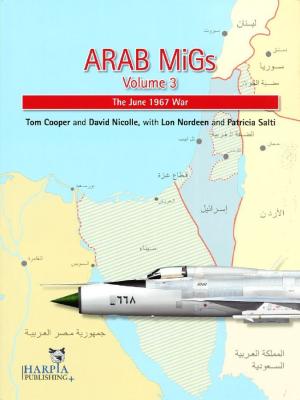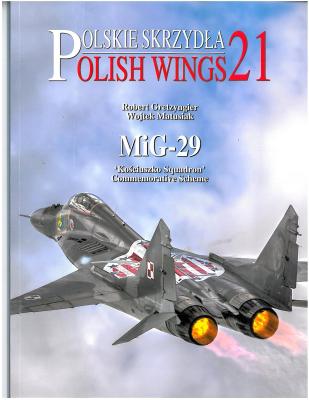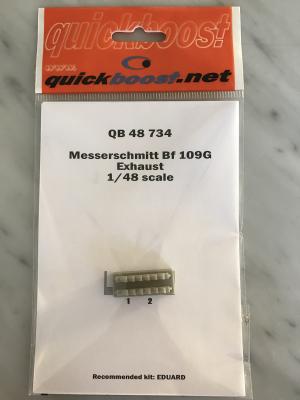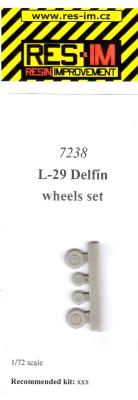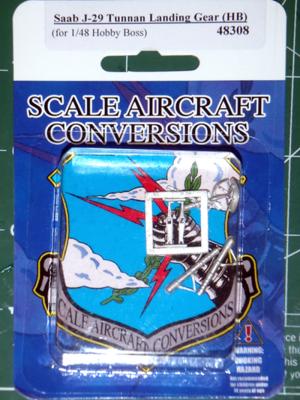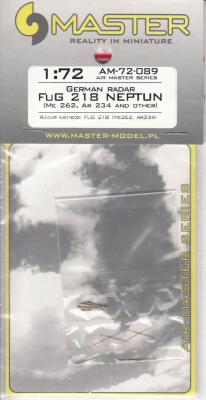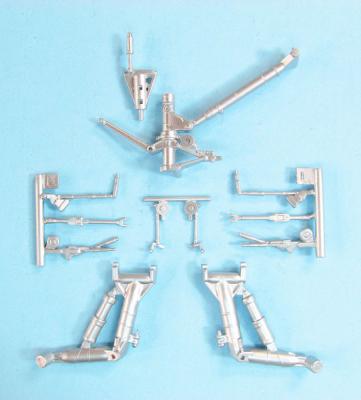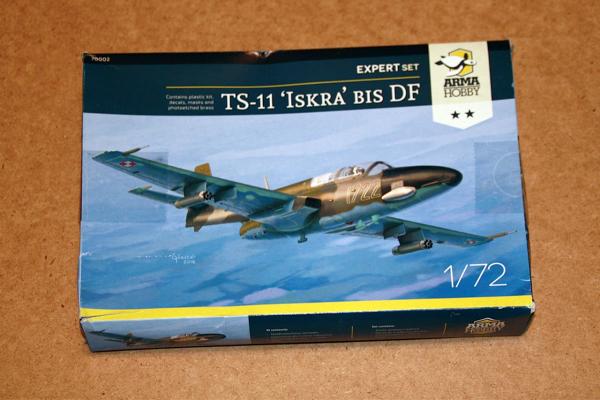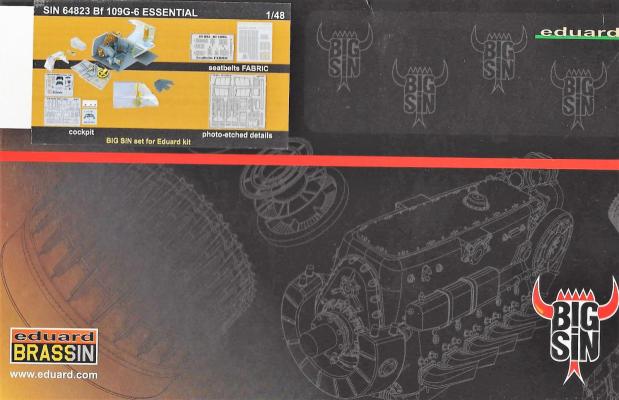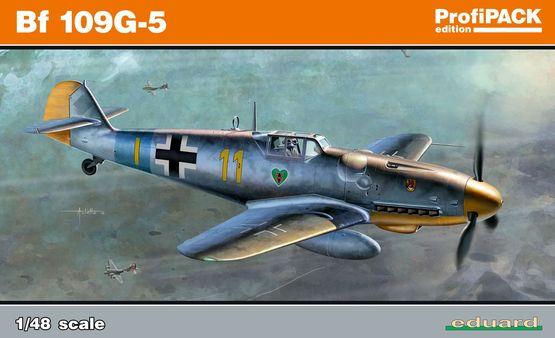Tom Cooper and David Nicolle's Arab MiG series is an incredible history that addresses the Arab air forces of Algeria, Egypt, Iraq, Jordan, Lebanon, and Syria and from 1955 through 1973. Although MiG aircraft dominate the story, all Post-WWII Arab aircraft are included. The authors have been able to access official archives as well as the combatants involved to provide a unique perspective of the Middle East conflicts. Volume one in this series, published November 19, 2009, covered the background of the Arab air forces from 1955 focusing on MiG-15 and MiG-17 fighters. Volume two, published October 19, 2011, addressed the Arab air force supersonic fighters from 1956 through 1967. Volume three in the Arab MiGs series focuses on the Arab air forces in the June 1967 War. Three additional volumes follow in this series, all with the same thick 256 glossy page count. I counted 148 black and white photographs, 28 color pictures, 17 color side profiles, and three maps.
Most of us have seen at least one photograph of a Polish Air Force MiG-29 in recent years with a large multi-color circular badge adorning its upper surface. I know I had seen a couple of MiG-29’s with the special marking, but I assumed they were one-off special markings.
Recently I was given the opportunity by IPMS USA to review Quickboost's Messerschmitt Bf 109G Exhaust for the 1/48 Eduard 109G series of kits. One of the first things to notice with this product is the excellent presentation of the packaging with the sealed flap on the back of package to allow for easy access to parts.
Upon removal of the resin exhaust you will notice the great detail that we have come to expect from Aires Quickboost products. The molding on the exhaust is excellent and they come off of the resin block with little effort, I tried a couple of different methods of removal, on the first one I removed with razor saw and the second on I was able to score with a blade and remove easily.
The L-29 Delfin was a jet-powered trainer airplane that was designed by Aero of Czechoslovakia. It was developed to provide the Warsaw Pact nations with a jet-powered replacement for their propeller driven trainers. The aircraft was in production from 1963 until 1974 with over 3,500 produced. In addition to the Warsaw Pact nations, the L-29 has been used by many other countries and in fact, a number are still in use in civilian hands. These can be seen in air shows around the world.
In spite of the wide usage of the L-29 and the associated interesting paint schemes, it has not been well produced as a model. Until recently, the only 1/72 scale kit of the L-29 was from KP of the Czech Republic. Recently, however, a new kit of the L-29 has been issued by AMK.
Scale Aircraft Conversions specializes in white-metal replacement parts, now including the 1/48 Hobby Boss Saab J-29 Tunnan.
The set includes 10 parts with the following breakdown:
- Nose gear main strut
- Nose gear wheel housing halve
- Main gear struts (2)
- Main gear retraction scissor struts (2)
These parts are little more than drop-in replacements; the white metal parts actually are the equivalent to several plastic parts, and are interchangeable as they fit the plastic parts almost perfectly.
The main gear retraction struts are molded to their runners with a rather thick base at the pinion point. It took quite a bit of careful sawing to free the part. This resulted in deformed pins with not much "pin" left over even after I had removed the runner. The main gear legs are very thick (which is to scale), and seemed very stable when simply snapped into place.
Master Models is a company that makes turned brass aftermarket parts, specifically pitot tubes, refueling probes, and antennas.
The first thing I would like to point out is how good the packaging and instruction sheet is. The packaging consists of a zip-lock type bag while the part is in a smaller bag, keeping it from moving all over. The instruction sheet is very clear and easy to understand, only needing 3 steps. Cut off original part, Drill a hole (0.3 mm), Glue in the new metal part. Just be careful drilling the hole, especially in 1/72. You have to put each antenna group together which includes 3 parts. Mine got a little bent because of how small they are. I needed to use my visor with the highest magnification. Others will probably have an easier time than me if they are used to putting such small delicate parts together.
Hot on the heels of the release of the new Kinetic 1/48 F-18C, Scale Aircraft conversions has released a set of replacement gear in white metal. The set comprises 12 parts and includes both the main and nose landing gear.
A couple notes on the SAC parts: The kit nose gear leg has several ejector pin marks and the top of the main strut is two parts. The SAC kit has no ejector pin marks and the main leg is a single solid part. You will need to drill out the main leg to attach the top section but that’s simple. Second, that main gear are complete replacement parts, but the nose gear will have to have several parts added, such as the nose gear light and the landing lights.
History
The PZL TS-11 Iskra (English: Spark) is a Polish jet trainer aircraft, used by the air forces of Poland and India. It is notable as the main training aircraft of the Polish Air Force, and as the oldest jet aircraft still in service in Poland.
Eduard continues to amaze with the release of its Bf-109G series of models. They’ve taken the kit and provided you with some impressive detail right out of the box. However, they also have their photo etch line and the Brassin line of resin. It was a natural to add this detail to their kits. The problem was that as you add more stuff the aftermarket stuff would become cost prohibitive. Eduard has an answer for that. They offer options in the BigSin series that bundles some of their sets into a lower cost offering. Same great aftermarket but at a lower cost.
This BigSin set offers the new Brassin multi-media cockpit set, fabric seatbelts, and a photo etch set. There is no part of the model that is not addressed. Let me look at each set separately.
Eduard has four levels of models that they release. The first is normally the Profi-pack with all the plastic, instructions, photo etch, masks, and decals. This is normally followed up by adding Brassin parts that the modeler can choose to add to the kit. The third one is the Weekend Edition which includes the plastic, instructions, and decals. Just a basic kit. The final version, which is normally released just as the Profi-pack is, is the Overtree kits. This is just the plastic parts. It is the least expensive. It does not include instructions, photo etch, masks or decals. The instructions can be downloaded from the Eduard website. So that is taken care of. Now some would think why would they do that? Let’s admit we all have extra decals and may not like what decals come in the kit. Normally when this kit is released there is a small LEPT pre-painted photo etch kit for those that like them.

